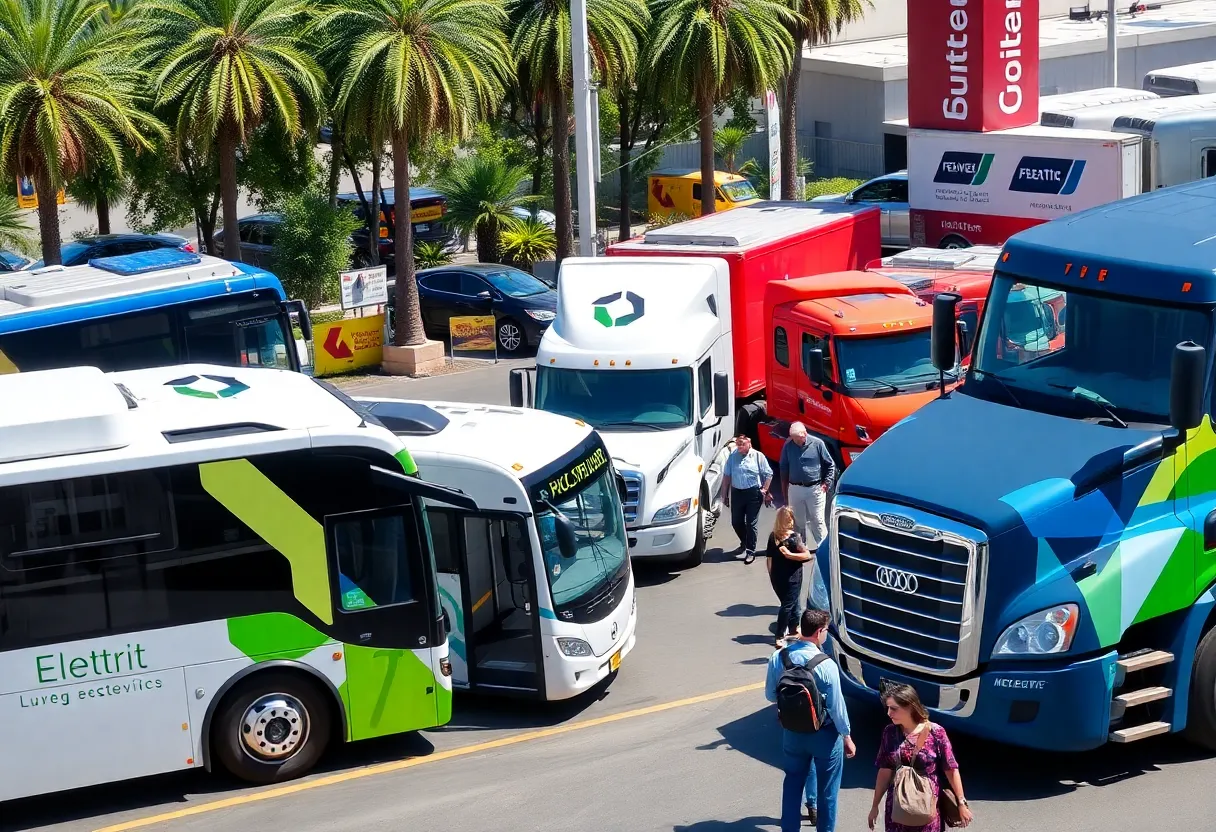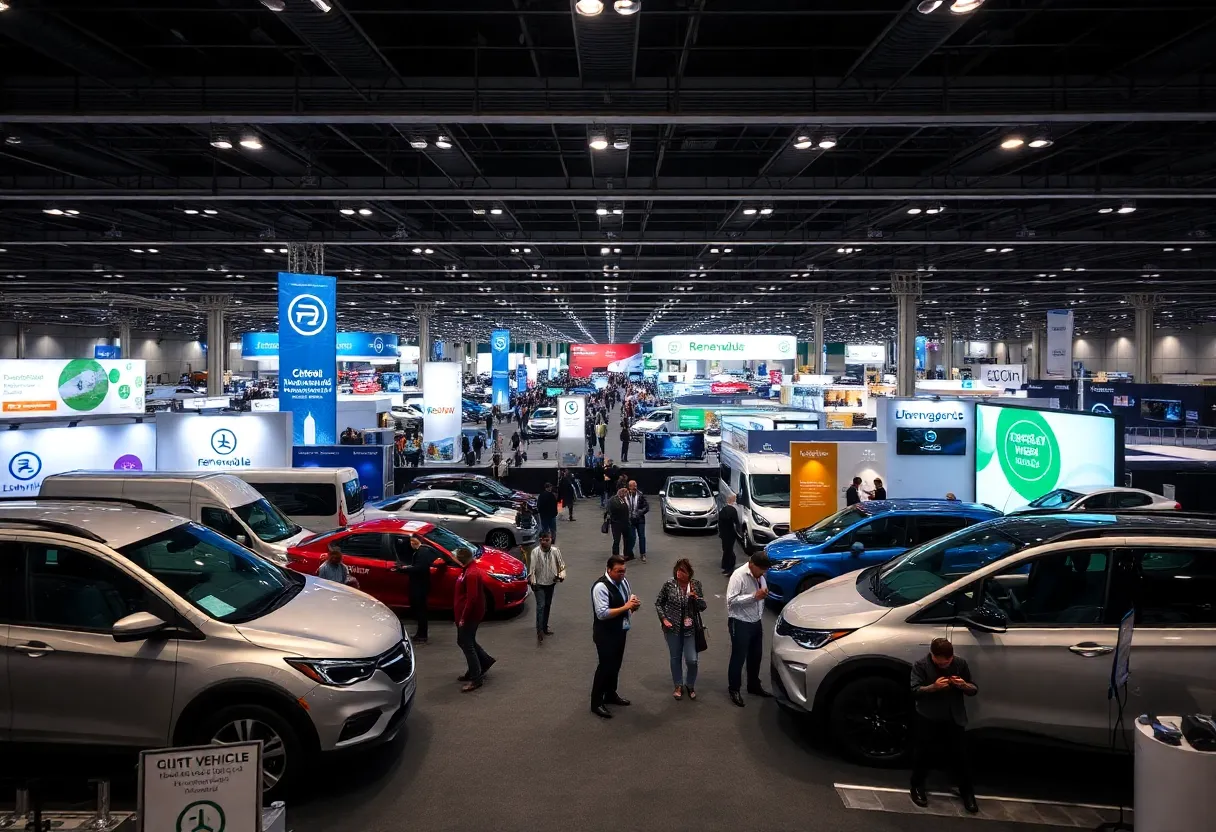News Summary
The ACT Expo in Anaheim has highlighted major changes in U.S. transportation fuel policies. The Transportation Research Center’s report signals a shift from electric vehicles to conventional fuels, particularly renewable diesel. Despite federal funding delays, state initiatives are thriving. Meanwhile, renewable natural gas is expanding, and electric school bus registrations are rising. The expo continues to explore sustainability and innovation in transportation, showcasing nearly 500 exhibitors and discussions on future challenges and opportunities.
Shifts in Transportation Fuel Policy at ACT Expo in Anaheim
In sunny Anaheim, California, the Advanced Clean Transportation (ACT) Expo kicked off on Monday, bringing together a vibrant community passionate about the future of sustainable transportation. One hot topic making waves this year is the sixth edition of The Transportation Research Center (TRC)‘s State of Sustainable Fleets report which has unveiled some major shifts in federal policy concerning fuel types.
Renewable Diesel Takes Center Stage
Historically, there has been a considerable push towards electric vehicles (EVs), driven in part by the Biden administration’s push for substantial funding to support initiatives like electric school buses. However, this latest report indicates that there could be a significant pivot away from EVs towards conventional fuels, especially renewable diesel (RD).
This shift in focus comes against the backdrop of shifting political winds, with intentions from the previous administration to roll back many environmentally friendly programs previously put in place. Consequently, the transport sector is currently experiencing an ever-growing cloud of uncertainty, particularly concerning federal regulations. New executive orders could jeopardize programs like the EPA’s Phase 3 GHG emissions regulations for heavy-duty vehicles and power plants, adding another layer to the ongoing transformation of the U.S. transportation policy landscape.
Funding Frustrations and State Solutions
One major issue causing concern among stakeholders is that while federal funding distribution under initiatives like the Infrastructure Investment and Jobs Act and the Inflation Reduction Act has been halted, state and local funding is exceeding expectations. In fact, there are over 600 programs currently available, totaling more than $13.5 billion dedicated to zero-emissions and near-zero-emissions projects. This is a significant silver lining amidst the uncertainty surrounding federal support.
Natural Gas and Renewable Fuel Growth
The report also highlights a remarkable 28% increase in renewable diesel production in the first half of 2024, with projections suggesting it could reach a staggering 7.257 million gallons per day. Coupled with this, a surge in natural gas usage is noted, correlated with the launch of Cummins’ new X15N engine, which has bolstered Class 8 tractor registrations that had previously declined for two years. However, it’s not all good news, as natural gas school bus registrations plummeted 54%, landing at just 89 units. This drop was partly due to Blue Bird’s decision to offload its natural inventory and discontinue offerings altogether.
Renewable Natural Gas on the Rise
The landscape for renewable natural gas (RNG) is changing for the better as well, with over 400 facilities across the U.S. producing RNG, showing a whopping 234% increase over the past six years. Nonetheless, the expiration of tax incentives like the Alternative Fuel Tax Credit (AFTC) is causing additional hurdles, as the new tax credit 45Z is still under development.
Focus on Electric School Buses
Despite these challenges, registrations for battery electric school buses rose by an impressive 47%, resulting in a total of 1,436 units. This statistic stands out especially considering potential cuts to funding in the EPA’s Clean School Bus Program. However, concerns are emerging around the costs of purchasing these electric models compared to traditional diesel buses.
The Road Ahead
As manufacturers grapple with an increase in orders and potential backlogs, many grant recipients from the EPA have had success extending project completion deadlines from two to three years, easing some of the pressure. At the same time, Vehicle-to-grid (V2G) technology is being explored in electric school buses, although adoption rates are slow. Notably, the Oakland Unified School District is making strides in this area with its transition to electric buses.
Future of Transportation at ACT Expo
The ACT Expo continues through Thursday, featuring nearly 500 exhibitors and a stellar lineup of speakers discussing the future of transportation and sustainability. This expo is set not just to showcase current innovations but also to explore the benefits and challenges of adopting these emerging technologies as we navigate a rapidly evolving transportation landscape.
Deeper Dive: News & Info About This Topic
HERE Resources
ACT Expo Highlights Evolving Trends in U.S. Fleets
California Celebrates Electric Vehicle Milestone
Fullerton City Council Faces Community Backlash Over Appointments and Regulations
California Explores New Road Charge System for Funding
Tragic Plane Crash Claims Lives of Canadian Family in Tennessee
BYD Unveils Fast Charging Technology for Electric Vehicles
BYD Unveils New Charging System for Electric Vehicles
Seven & i Holdings Explores Merger with Couche-Tard
Virgin Group Competes with Eurostar in Rail Travel
US Dollar Takes a Hit as Jobless Rate Rises
Additional Resources
- ACT News: State of Sustainable Fleets 2025
- Wikipedia: Sustainable Transportation
- STN Online: Shift in Federal Policy
- Google Search: Transportation Policy
- The EV Report: 500-Mile Hybrid Truck
- Google Scholar: Hybrid Trucks
- The EV Report: Honda Hydrogen Tech
- Encyclopedia Britannica: Hydrogen Fuel
- The EV Report: Composite Body for EVs
- Google News: Composite Materials in Transportation







